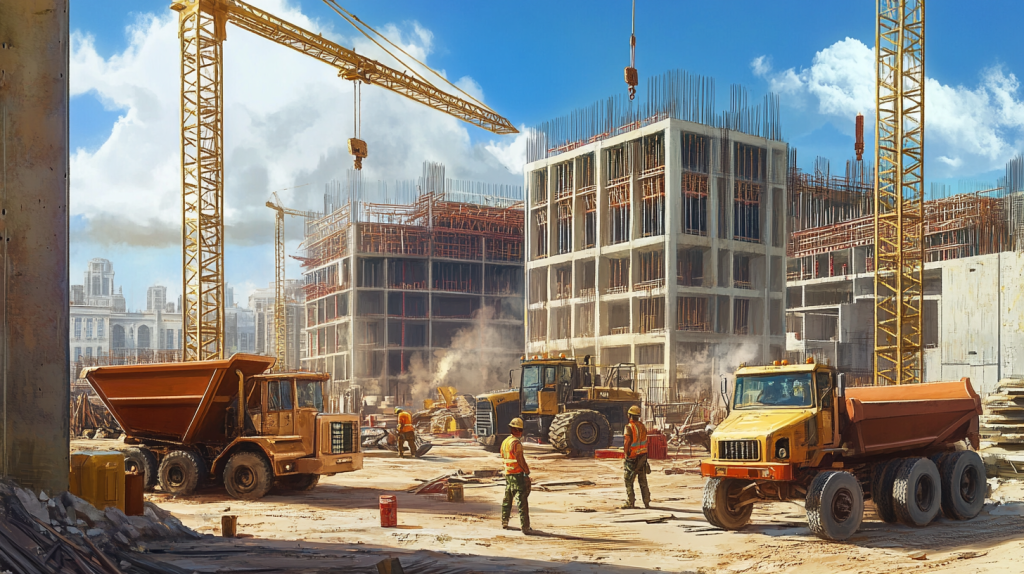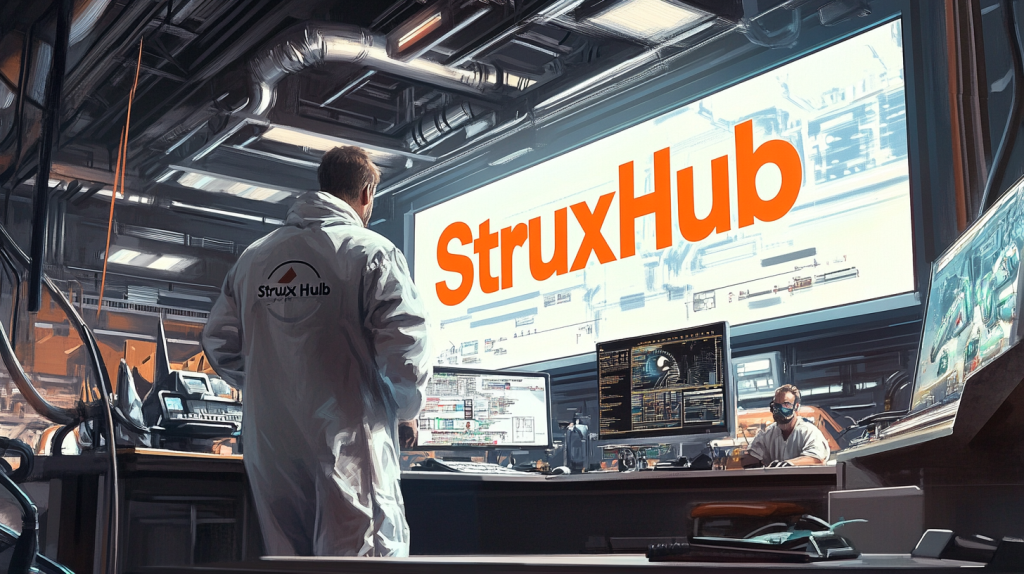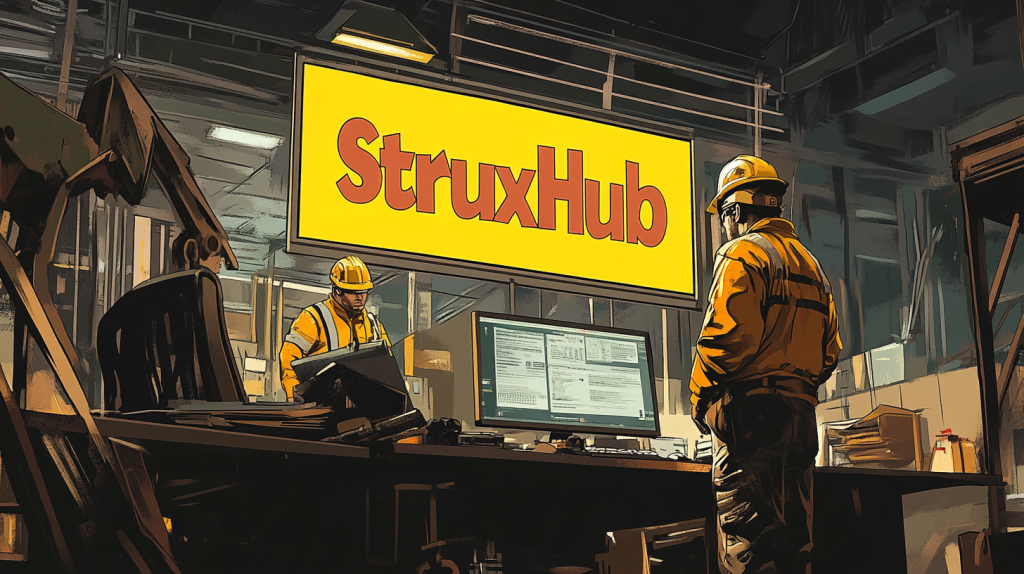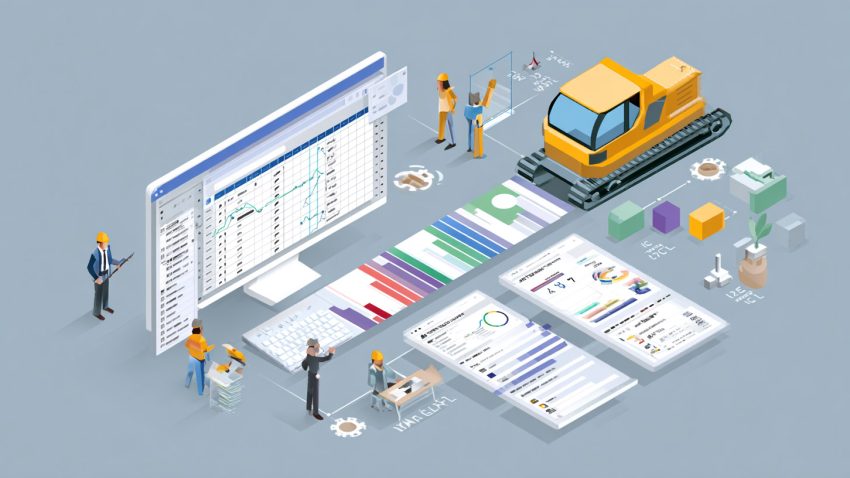How Building Information Modeling (BIM) Improves Construction Field Management: Key Benefits and Strategies
Table of Contents:

In today’s construction industry, field management inefficiencies can lead to costly delays, resource misallocation, and miscommunication between stakeholders. Contractors, superintendents, and project managers need better visibility, coordination, and control over field operations to ensure projects stay on time and within budget.
Building Information Modeling (BIM) is revolutionizing construction field management by enabling real-time collaboration, accurate planning, and data-driven decision-making. Instead of relying on paper blueprints and outdated processes, BIM integrates 3D modeling, scheduling, and real-time site data to optimize job site efficiency.
This guide explores how BIM enhances construction field management, outlining its key benefits, best practices, and implementation strategies for contractors and superintendents.
What is BIM and How Does It Apply to Field Management?
Building Information Modeling (BIM) is a digital representation of a construction project’s physical and functional characteristics. It allows architects, engineers, and construction teams to collaborate using intelligent 3D models that provide real-time insights into job site conditions, scheduling, and resource planning.
How BIM Supports Field Management
- Centralized Data Access – Provides contractors and superintendents with instant access to updated blueprints, construction plans, and material tracking.
- Improved Collaboration – Connects office teams and field crews to prevent miscommunication and delays.
- Real-Time Updates – Ensures all stakeholders work with accurate, up-to-date project information.
Key Benefits
- Reduces errors caused by outdated construction drawings.
- Improves communication between office teams and field personnel.
- Enhances project coordination by providing real-time, data-driven insights.
Best Practices
- Implement BIM-based field management software to integrate project data with real-time site updates.
- Train field teams to use BIM models for scheduling, material tracking, and task assignments.
- Use cloud-based BIM platforms to provide easy access to construction documentation on mobile devices.
BIM transforms construction field management by improving visibility, accuracy, and collaboration, allowing teams to eliminate inefficiencies and make data-driven decisions.

How BIM Improves Job Site Coordination and Workforce Efficiency
One of the biggest challenges in construction field management is coordinating multiple trade teams while keeping workflows efficient. BIM enhances job site coordination by integrating scheduling, workforce assignments, and material tracking into one digital model.
How BIM Streamlines Workforce Coordination
- Automated Crew Scheduling – Assigns tasks based on worker availability, skill sets, and project priorities.
- Conflict Detection – Identifies overlapping tasks and trade conflicts before they cause delays.
- Real-Time Communication – Updates teams instantly when changes occur in project schedules, material availability, or site conditions.
Key Benefits
- Reduces workforce bottlenecks and prevents scheduling overlaps.
- Ensures teams receive real-time updates on job site progress.
- Increases on-site efficiency by eliminating manual scheduling errors.
Best Practices
- Use BIM-integrated workforce scheduling software to track labor assignments.
- Coordinate trade teams based on BIM-generated project timelines.
- Utilize mobile BIM applications so superintendents can update crew schedules remotely.
BIM enhances job site coordination by improving scheduling accuracy, preventing workforce conflicts, and enabling real-time collaboration, making construction projects more efficient and cost-effective.
Related Articles:
The Construction Site Coordination Platform Built for Field Teams: StruxHub
Enhancing Material and Equipment Tracking with BIM
Tracking materials, tools, and heavy equipment across multiple job sites is critical for avoiding project delays and cost overruns. BIM simplifies inventory management by integrating real-time tracking of materials and machinery usage.
How BIM Helps Track Materials and Equipment
- Prevents Material Shortages – Predicts when and where materials will be needed, reducing over-ordering and waste.
- Optimizes Equipment Usage – Ensures that machinery and tools are properly allocated, preventing downtime.
- Reduces Theft and Misplacement – Tracks tools and equipment using BIM-integrated RFID and barcode systems.
Key Benefits
- Reduces unnecessary material waste and project costs.
- Prevents delays caused by misplaced tools or unavailable equipment.
- Enhances job site planning by aligning material delivery with project schedules.
Best Practices
- Implement BIM-based inventory tracking software to monitor material availability.
- Use RFID tags and GPS tracking to locate high-value equipment.
- Automate purchase orders based on BIM-generated material forecasts.
BIM enhances construction site efficiency by ensuring the right materials and equipment are in place at the right time, helping superintendents reduce waste and maximize productivity.

Improving Safety and Compliance with BIM-Driven Field Management
Construction sites are high-risk environments, making safety and regulatory compliance a top priority. BIM enhances safety planning, risk assessment, and compliance tracking, ensuring job sites adhere to industry standards.
How BIM Enhances Safety Compliance
- 3D Hazard Mapping – Identifies potential safety risks before construction begins.
- Automated Safety Checklists – Ensures workers follow OSHA regulations with digital compliance tracking.
- Incident Reporting and Prevention – Allows superintendents to log safety violations and accident reports in real time.
Key Benefits
- Reduces job site accidents by identifying risks early.
- Ensures all workers follow updated safety protocols.
- Simplifies compliance tracking by digitizing safety documentation.
Best Practices
- Use BIM-integrated safety apps for on-site hazard reporting.
- Conduct regular digital safety audits using BIM-generated compliance data.
- Implement automated alerts for regulatory updates and training requirements.
BIM improves job site safety by automating compliance tracking, identifying risks, and ensuring adherence to industry regulations, reducing accidents and liability issues.
How to Implement BIM in Construction Field Management
Adopting BIM for construction field management requires a structured approach to ensure successful implementation and long-term benefits.
Implementation Strategies
- Assess Project Needs – Identify pain points in current field management workflows where BIM can improve efficiency.
- Invest in Training – Ensure that superintendents, contractors, and field crews understand how to use BIM tools effectively.
- Integrate with Existing Software – Connect BIM with project management platforms like Procore, StruxHub, or Autodesk Build.
- Adopt Mobile BIM Applications – Provide on-site teams with mobile access to BIM models for real-time updates.
Key Benefits
- Improves construction efficiency by aligning BIM with field operations.
- Reduces training time with user-friendly BIM tools for field teams.
- Ensures seamless collaboration across multiple project stakeholders.
Best Practices
- Start with pilot projects before full-scale BIM adoption.
- Train teams using BIM simulation models to improve field readiness.
- Use BIM dashboards to track project progress in real time.
Proper BIM implementation enhances construction field management efficiency, workforce coordination, and job site visibility, leading to faster project completion and cost savings.

How BIM Supports Sustainable and Energy-Efficient Construction
Sustainability and energy efficiency are becoming key priorities in construction, and BIM is playing a major role in helping contractors and superintendents implement green building practices. Traditional field management often lacks real-time environmental tracking, energy consumption analysis, and waste reduction strategies, leading to higher costs and environmental impact.
By integrating energy modeling, lifecycle assessments, and sustainable material tracking, BIM ensures that construction projects comply with green building standards while optimizing resource use and reducing waste.
How BIM Supports Sustainable Construction Practices
- Energy Efficiency Modeling
- BIM helps stimulate energy consumption to determine the most cost-effective HVAC, lighting, and insulation systems.
- Allows superintendents to compare different materials and construction methods to find the most sustainable option.
- Smart Material Management
- BIM tracks materials from procurement to installation, ensuring minimal waste and better recycling processes.
- Helps teams choose eco-friendly, energy-efficient materials that comply with LEED, BREEAM, and other green building certifications.
- Carbon Footprint Reduction
- BIM provides real-time carbon tracking, allowing construction teams to measure and reduce their environmental impact.
- Encourages the use of prefabricated and modular construction methods, which significantly reduce waste and emissions.
- Water Management and Site Optimization
- BIM-integrated field management helps plan efficient water usage, reducing waste through rainwater harvesting and smart irrigation systems.
- Ensures that projects adhere to local environmental regulations and sustainability benchmarks.
Key Benefits
- Reduces construction waste and optimizes material use.
- Ensures compliance with green building codes and sustainability certifications.
- Improves long-term energy efficiency for buildings.
Best Practices
- Implement BIM-based energy modeling before finalizing project designs.
- Use BIM-generated data for sustainability certifications (LEED, BREEAM, WELL Building Standard, etc.).
- Track material sourcing and recycling efforts using BIM dashboards.
BIM-driven construction field management supports sustainable and energy-efficient building practices, helping contractors and superintendents reduce environmental impact while lowering operational costs.
Related Articles:
Best Guide to Construction Management Software
The Best Guide to Delivery Management Systems (DMS) for Commercial Construction
Unlock the Full Potential of Your Construction Projects with StruxHub
StruxHub enhances efficiency and coordination across all project phases, providing a single source of truth that eliminates silos and fosters collaboration. Real-time updates, financial management tools, and seamless commvunication features ensure that all team members and stakeholders are aligned and informed, reducing the risk of errors and delays. With comprehensive solutions for document management, risk mitigation, and quality control, StruxHub maintains project integrity and safety, while mobile access and integration capabilities further enhance project flexibility and efficiency.
StruxHub’s Key Features and Benefits:
- Advanced Delivery Management: Automate and optimize your delivery schedules, ensuring materials arrive just in time, every time.
- Site Communication: Utilize georeferenced maps and instant messaging to keep every team member informed and aligned.
- Construction Materials Management: Track inventory levels and manage materials procurement with ease, reducing waste and avoiding project delays.
- Construction Safety & Inspection Workflows: Implement customizable mobile forms for conducting safety inspections and managing compliance documentation effortlessly.
- Short-Term Scheduling: Visualize project tasks with detailed floor plans, linking each activity to specific locations for better planning accuracy.
- Construction Resource Management: Efficiently allocate personnel and equipment, maximizing productivity and reducing idle time.
StruxHub’s Product Offering:
- StruxHub Deliveries: Simplifies the coordination of incoming deliveries, ensuring materials and equipment are precisely timed to project needs.
- StruxHub Logistics: Offers intelligent site logistics planning, from crane scheduling to space allocation, for smoother operations.
- StruxHub Safety: Elevates on-site safety standards with easy-to-use tools for inspections, permits, and incident reporting.
- StruxHub Scheduling: Enhances project timelines with intuitive scheduling tools that ensure tasks are completed efficiently and on time.
With StruxHub, construction companies can look forward to a streamlined, more efficient project execution that delivers on time and within budget. Embrace the power of innovation and take your construction projects to the next level.
Don’t miss out on the opportunity to optimize your construction management processes with StruxHub. Sign up for a free demo today. Let’s build smarter, together.
FAQ

StruxHub
Experience the power of StruxHub today and witness firsthand how it can revolutionize your construction operations.
How does Building Information Modeling (BIM) improve construction field management efficiency?
Building Information Modeling (BIM) enhances construction field management efficiency by streamlining workflows, improving collaboration, and reducing errors. Traditional construction management relies on paper-based drawings, manual scheduling, and static project plans, leading to miscommunication, delays, and costly rework. BIM digitizes construction site operations by providing a centralized, real-time model that connects all stakeholders—contractors, superintendents, engineers, and project managers—with accurate, up-to-date information.
1. Real-Time Data and Collaboration
One of the biggest efficiency gains from BIM is its ability to provide real-time updates to construction teams working on-site. Instead of waiting for paper blueprints or emails with new drawings, superintendents and field teams can access updated models, material schedules, and work orders instantly. This eliminates project delays caused by outdated information.
2. Better Workforce Coordination
BIM integrates with crew scheduling software, allowing project managers to assign tasks based on workforce availability and real-time job progress. Instead of manually adjusting schedules when delays occur, BIM-based scheduling systems can automatically reassign workers or shift workloads, ensuring maximum productivity.
3. Error Reduction and Clash Detection
Errors and conflicts between MEP (mechanical, electrical, and plumbing) systems, structural elements, and site conditions can cause expensive rework. BIM enables clash detection, allowing teams to identify and resolve conflicts digitally before they become on-site issues.
By providing real-time collaboration, workforce coordination, and error reduction, BIM significantly improves construction field management efficiency, helping projects stay on schedule and within budget.
What are the biggest challenges in implementing BIM for field management?
While BIM offers numerous benefits, implementing it for field management can present challenges, especially for construction firms that haven’t fully transitioned to digital workflows. Understanding these challenges helps construction teams plan an effective BIM integration strategy.
1. High Initial Investment Costs
One of the most common concerns is the cost of BIM adoption, including software licensing, training programs, and hardware upgrades. Many companies hesitate to invest in BIM due to budget constraints, despite the long-term benefits of cost savings and efficiency improvements.
2. Training and Workforce Adoption
BIM requires a learning curve for superintendents, contractors, and crew members who are accustomed to traditional construction management methods. Ensuring that field teams understand how to use BIM tools effectively requires comprehensive training and ongoing support.
3. Integration with Existing Construction Management Systems
Many construction firms already use project management tools like Procore, Autodesk Build, or Oracle Primavera. A common challenge is ensuring seamless integration between BIM models and existing workflows, preventing data silos and redundant documentation.
4. Resistance to Change
Field teams often resist new technologies, fearing that BIM will add complexity rather than simplify processes. Overcoming this requires proper onboarding and showcasing BIM’s real-world benefits in reducing manual workload and improving efficiency.
Successfully implementing BIM requires strategic planning, training, and integration with existing workflows. While initial adoption may present challenges, the long-term gains in efficiency, cost reduction, and better field management far outweigh the difficulties.
How does BIM improve collaboration between contractors, superintendents, and field crews?
BIM bridges communication gaps between contractors, superintendents, and field crews by ensuring that everyone is working with the most up-to-date, accurate information. In traditional workflows, teams rely on paper-based blueprints, verbal instructions, and emails, leading to misinterpretations, errors, and project delays. BIM eliminates these inefficiencies by providing a real-time, cloud-based platform where teams can collaborate seamlessly.
1. Single Source of Truth
BIM serves as a centralized repository for all construction data, ensuring that contractors, engineers, and superintendents are working from the same digital model. This prevents conflicting project versions and reduces errors caused by outdated drawings or misplaced documents.
2. Real-Time Project Updates
With BIM-integrated mobile apps, field crews can receive instant updates on design changes, material orders, and scheduling adjustments, reducing confusion and miscommunication. Instead of relying on email chains or physical document handoffs, updates are pushed directly to every team member’s device.
3. Clash Detection and Issue Resolution
BIM’s clash detection tools allow contractors and field teams to identify potential conflicts—such as MEP systems interfering with structural elements—before issues arise on-site. Resolving conflicts before construction starts saves time and prevents costly rework.
By providing a centralized data source, real-time updates, and issue detection tools, BIM ensures seamless collaboration between contractors, superintendents, and field teams, improving efficiency, communication, and overall project success.
What role does mobile BIM play in construction field management?
Mobile BIM is revolutionizing construction field management by allowing superintendents and contractors to access real-time project data directly from their smartphones or tablets. Instead of being tied to a desktop or relying on printed blueprints, mobile BIM applications provide instant access to digital models, crew assignments, and material tracking.
1. Field-Friendly Digital Models
With mobile BIM tools, field teams can view 3D models, section views, and project plans while on-site, reducing errors caused by misreading paper blueprints.
2. On-the-Go Communication and Collaboration
Mobile BIM allows workers to leave notes, attach photos, and flag issues directly within the model, enabling instant feedback and faster problem resolution.
3. Real-Time Safety and Compliance Tracking
By integrating BIM with safety management tools, mobile applications allow crews to log safety incidents, conduct compliance checklists, and update risk assessments in real time.
Mobile BIM ensures that superintendents, contractors, and field crews always have access to updated project data, improving efficiency, communication, and safety compliance.
What are the cost savings associated with BIM-driven construction field management?
BIM-driven field management leads to significant cost savings by improving project efficiency, reducing rework, and optimizing resource allocation. Many construction firms experience high costs due to inefficiencies, material waste, and miscommunication, all of which BIM helps mitigate.
1. Reduced Rework Costs
Rework due to design errors, poor coordination, and miscommunication is a major cost driver in construction. BIM’s clash detection and real-time collaboration features help teams identify and resolve issues before they impact the job site, reducing costly rework.
2. Better Workforce and Equipment Utilization
By integrating real-time scheduling, crew tracking, and equipment monitoring, BIM ensures that labor and machinery are used efficiently, preventing idle time and resource waste.
3. Optimized Material Management
Material waste due to overordering, theft, or mismanagement can quickly inflate project costs. BIM-driven inventory tracking ensures that materials are delivered just in time, reducing excess spending.
4. Faster Project Completion
BIM improves coordination, reduces errors, and streamlines workflows, allowing projects to be completed on time or even ahead of schedule, saving firms money on labor costs and penalties for late completion.
By reducing rework, improving resource utilization, preventing material waste, and accelerating project completion, BIM helps construction firms cut costs while maximizing efficiency.




